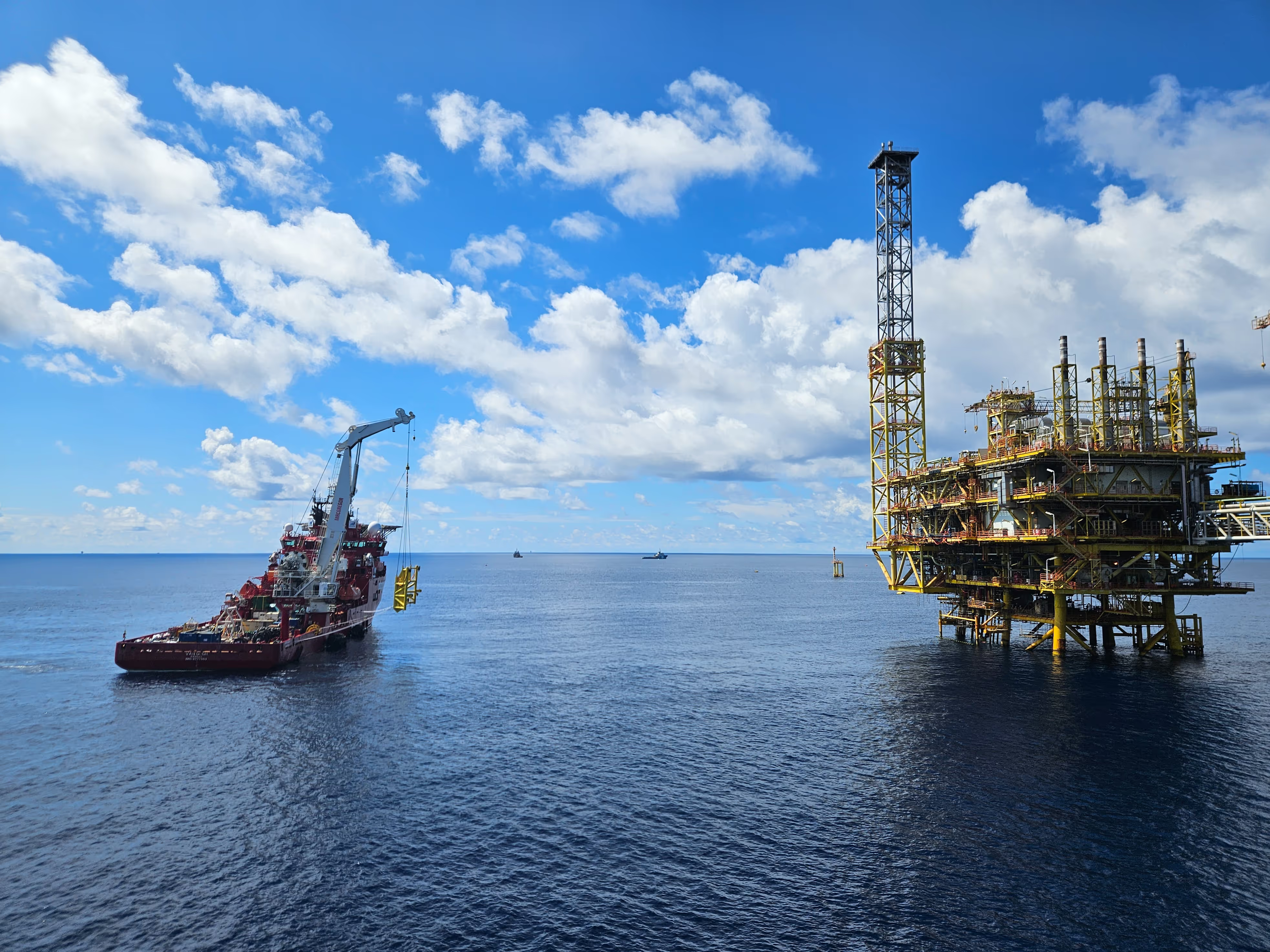ExxonMobil contracted Conbit for the West Kingfish (WKF) offshore project. The project's scope is to replace the flare tip access platform during a tight shutdown schedule. ExxonMobil requested Conbit to offer its specialist service in the field of flare tip replacements.
Conbit is known for its well-established handling methodology and reputation for many offshore flare tip replacement projects worldwide.
Watch how we prepare and execute
Watch how we prepare and execute

Project approach
Conbit explained the handling method used for many flare tip replacements worldwide. It is a more favorable method due to its cost-effectiveness and flexibility.
After reviewing the available information, Conbit was confident of using a mechanical handling method to replace the flare tip. The flare tip access platform had sufficient strong points to carry loads of the lifting system and the flare tip. However, they had a client visit to guarantee and convince all stakeholders. Then, Conbit initiated the structural engineering phase.
The power of preparation
Conbit prepared for the maneuver with a thorough structural engineering plan. They ensured all operators were well-trained and had expertise in flare-tip operations. Conbit monitored the sea state and the wind speed. The flare tip access platform had sufficient strong points to carry loads of the lifting system and the flare tip.
To assure all stakeholders involved, the factory acceptance test (FAT) took place during the structural engineering phase at the Conbit warehouse, with the client’s presence. Conbit utilized the base frame and lift boom to perform the mechanical handling in removing a pre-existing flare tip and replacing a new one weighing 442kg and measuring 3.747mm x 819mm. They used a supply vessel to move the existing and new flare tip to and from the platform.
Conbit completed the entire project within four days.
Challenges
Conbit was required to mobilize the lifting equipment concisely, testing the logistics team’s ability. With expert planning and shipping of lifting equipment, they successfully negotiated this challenge. Conbit monitored the weather prior to and during operations. They were anticipating terrible weather that could limit access to the platform and disrupt the overall operation. Conbit had to adjust the staffing schedule to ensure that the team would complete the work before the weather worsened. They dismantled the lifting equipment after the bad weather had passed, three days later.
PRoject case study pdf
Download the PDF of this project case study here.
Thanks for leaving your email address. You can now download the requested case study
Oops! Something went wrong while submitting the form.
No items found.
Related Cases
Related Services
Maritime
Oil & Gas
Petrochemical
Wind
Lifeboat Davit Installation Services
Onshore & Offshore
Oil & Gas
Petrochemical
Wind
Maritime
Living Quarter Installation Services
Onshore & Offshore
Oil & Gas
Petrochemical
Wind
Maritime
Caisson Replacement Services
Onshore & Offshore
Maritime
Oil & Gas
Petrochemical
Crane Replacement Services
Onshore & Offshore
Oil & Gas
Petrochemical
Flare Tip Replacement Services
Onshore & Offshore
Maritime
Wind
Oil & Gas
Inspections
Onshore & Offshore
Oil & Gas
Petrochemical
Wind
Modification
Onshore & Offshore
Oil & Gas
Petrochemical
Wind
Maintenance
Onshore & Offshore
Oil & Gas
Wind
Petrochemical
Maritime
Installation
Onshore & Offshore
Oil & Gas
Petrochemical
Decommissioning
Onshore & Offshore
Contact
We're here to answer your questions
Do you have any technical questions, general enquiries or do you need additional information? Don’t hesitate to contact our experts. With their expertise and experience in lifting services, they will gladly help you.
You can contact us by phone or email. We’re looking forward to your questions!
You can contact us by phone or email. We’re looking forward to your questions!












.png)
-1.avif)


